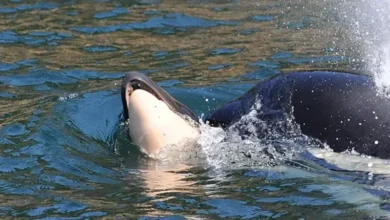Incredible Journey: Ancestors from 2 million years ago take a voyage to space

It’s an astonishing turn of events as our ancestors, who lived two million years ago, recently found themselves on an unexpected journey to space.
These ancient beings, whose wildest dreams could never have included space travel, were propelled into the cosmos just a few days ago, earning them the title of “posthumous astronauts.”
The relics in question belong to two ancient human species: Australopithecus Sediba, a hominin species dating back 2 million years, and Homo naledi, a hominin species that lived 250,000 years ago. On September 8, 2023, their fossilized remains were launched into space aboard Virgin Galactic’s spaceplane, VSS Unity.
The payload was anything but ordinary, consisting of a clavicle bone from Australopithecus, meticulously encased within a small carbon fiber container, alongside a thumb bone from Homo naledi.
Following liftoff, VSS Unity separated from its mothership, VMS Eve, and ascended to an altitude ranging from approximately 13.7 to 15 kilometers. At this point, VSS Unity employed its rocket motor to propel itself into suborbital space.
The artifacts reached their cosmic destination under the watchful eye of astronaut Tim Nash, a South African entrepreneur and conservationist renowned for his contributions to the study of human origins in Africa.
Nash received these priceless remains from none other than Professor Lee Berger, a distinguished figure celebrated for his extensive work in the Rising Star Cave system, where both Australopithecus Sediba and Homo naledi were originally unearthed.
These two extinct hominin species represent enigmatic chapters in the complex tapestry of human evolution. Australopithecus Sediba, whose fossils were uncovered in South Africa’s Malapa Cave, known as the Cradle of Humankind, dates back approximately 1.98 million years.
Experts speculate that this species possessed the ability to walk upright but also spent a substantial portion of their lives navigating treetops.
Matthew Berger, the son of Professor Lee Berger, who, as a child, played a role in the discovery of Australopithecus Sediba, shared his perspective, saying, “These fossils represent individuals who lived and perished hundreds of thousands of years ago, individuals who likely could never have fathomed the incredible journey they are now embarking upon as ambassadors for all of humanity’s ancestors”.










